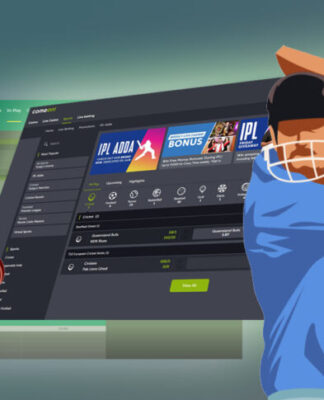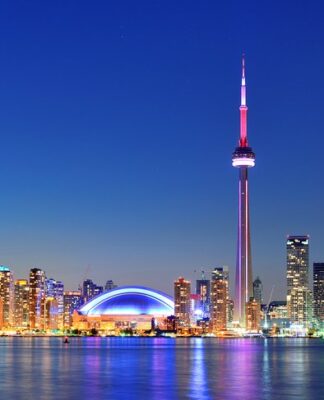Climbing Kilimanjaro is a challenge for any adventurer.
You’re not alone if you’ve ever dreamed of scaling Mount Kilimanjaro. This breathtakingly beautiful snow-topped mountain is the tallest free-standing mountain in the world. Climbing is one of the best ways to experience everything this magnificent African country offers.
Climbing Kilimanjaro can be rewarding and also very challenging. However, if it’s not done properly, it could lead to injury or worse.
Below are some tips on how to climb Mount Kilimanjaro and have an outstanding time doing it.
Plan Your Accommodations Beforehand
As a general rule, budget a few thousand per person, including airfare and other expenses, for this trip. This amount can vary depending on whether you go during peak season or off-peak season, and what accommodations you choose.
If possible, find a group of friends or family members to join forces and split the costs between them. This will make the experience much more affordable.
You should also plan your itinerary carefully before booking any flights or accommodations. The best way to do this is by using an online travel planner like TripAdvisor or Expedia to find hotels near airports and other important locations in Tanzania. This will help minimize your travel time once you arrive in Africa.
Make Sure You’re Fit Enough for the Climb
Climbing Kilimanjaro isn’t easy. It takes several days at high altitudes and involves serious physical exertion every step of the way. Make sure you are training for Kilimanjaro before you plan your trip.
You should try to do at least 30 minutes of cardio three times a week before going on this adventure so that your body is prepared for these conditions. You should start working out now so that when you’re on the mountain, there’s no chance of getting tired or injured.
The Rongai route is great for inexperienced climbers.
Get Acclimatized Before You Go Up
Before you climb the routes up Kilimanjaro, you need to get acclimated.
The most common cause of death on Kilimanjaro is altitude sickness. If you’re coming from sea level, the altitude will affect your body in several ways.
You might get tired easily, have trouble sleeping, and feel nauseous or lightheaded. Altitude sickness can be extremely dangerous if not treated properly, so you must take it seriously and listen to your body.
If you feel like something is wrong, seek medical help immediately.
It’s also important to get acclimatized by visiting a higher elevation city such as Nairobi or Dar es Salaam. Spend at least a few days there before heading up to Kili base camp. If possible, try doing some physical activity while at lower altitudes, such as hiking or running.
Pack Lots of Layers to Stay Warm
The temperature drops quickly at night on the mountain and during the day when clouds roll in, even on sunny days.
Besides bringing lots of warm clothing, always bring extra socks and underwear because they get wet easily from sweating or rainwater getting into your tent or hut. Also, bring gloves to protect your hands from windchill while hiking in cold weather.
You need to be prepared for a variety of conditions. It’s important to bring all the right gear, including good boots and waterproofs, as well as plenty of layers.
Take Plenty of Water and Food With You on the Climb
As you go higher up the mountain, there will be less oxygen in the air, so you will need to keep hydrated at all times.
Dehydration is a major cause of death on Kilimanjaro because of its high altitude and low humidity levels. Drink plenty of water throughout the trek.
Foods that are easy to digest, such as dried fruit, nuts, and pretzels, will help keep your energy levels up on the mountain. Avoiding caffeine or alcohol while climbing is also recommended, as both can dehydrate you.
Bring Insect Repellent With You
Bring insect repellent, especially if you’ll be hiking near Lake Victoria or other bodies of water with mosquitoes.
The mosquitoes are large and aggressive in this area. However, the malaria risk is low if you take precautions such as using insect repellent and wearing long sleeves and pants while outside at dusk or dawn when they’re most active.
If you get bitten anyway and don’t feel well afterward, see a doctor immediately. Malaria symptoms can appear weeks after exposure and it’s best to take care of them quickly before they progress into something more serious, like cerebral malaria or a coma.
These conditions are rare, but it’s important to take precautions.
Get all vaccinations necessary for Tanzania at least three weeks before traveling. This will help you avoid complications when arriving in Nairobi, Kenya, or Dar es Salaam, Tanzania.
Choose the Right Guide Company
If you want to know how to climb Kilimanjaro, you need to hire the right tour guide company. There are many companies offering trips up Kilimanjaro, but not all of them are equal.
Some have more experience than others, and some offer better service or more reliable guides. Before booking a trip, find out which companies operate out of your local airport and ask about their reputation online and with other travelers.
The best agencies are those who offer many services, such as safaris and other tours. They will have guides who are experts in a good deal of terrain, from mountain peaks to deep jungle forests.
If possible, check out their website and read reviews from past clients before hiring them. You should also request references from other climbers who have used the company before so that you can get an idea of what kind of service they offer.
Climbing Kilimanjaro: This Is How to Get the Most Out of Your Trip
While climbing a mountain of this magnitude can be daunting, it is also exhilarating.
Climbing Kilimanjaro can be a rewarding experience and teach you many things about yourself, provided you have the right guide and training. Consider these tips if you plan to climb Mt. Kilimanjaro soon.
Don’t forget to browse our site for advice on business, products, services, and more.















